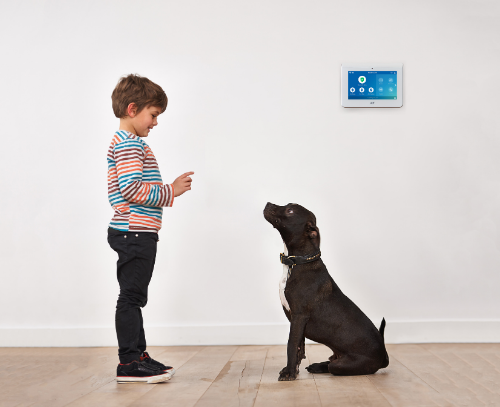Raya Sevilla, Senior Vice President of Product

The rise of consumer interest in smart home products is no secret with the market approaching $40 billion in the U.S. alone by the end of 2020. As these products play an increasingly important role in our daily lives, we must create a future where they are constantly learning and using data to work together seamlessly within the smart home ecosystem.
Take my current favorite smart home product - my vacuum cleaner. In many ways, it’s brilliant: I can control it via mobile app or by voice. I can instruct it to clean the entire house, or just a single room and it empties the dustbin by itself.
But despite the substantial amount of data this smart vacuum cleaner has gathered, it’s still not learning or adapting to the other smart home products in my home. About once a day, I receive a notification to my phone stating that the vacuum has once again gotten stuck on the same chair in my living room. This reminds me that we are still at the start of the smart home experience. While we have plenty of smart home devices that are already accumulating massive amounts of data individually - the next step is to use them more
Smart products will soon be ubiquitous to the everyday home. The important question now is how do we advance the smart home by turning data into actionable insights that create a more personalized experience?
It’s More About Data Than DIY
Right now, too much of the smart home discussion focuses on do-it-yourself (DIY) versus professionally installed products. DIY and professional installation are means to incorporate hardware into a smart home ecosystem. The convenience and helpfulness of a smart home product should not be determined by how it is installed. To fully achieve the advancement of the smart home, we must focus on protocol standardization, interoperability, and ensuring that each product - DIY or professionally installed - is part of the overall smart home ecosystem.
Smart home data transformed into insights can improve personalization, but also peace of mind for customers. For example, triangulation of multiple data elements can better profile the nature of real or false alarms as well as determine the difference between an intruder or a pet in a home. If all of our smart home devices are interacting together, then they can provide more accurate measures of security risks for customers. Also, more intelligent smart home security systems won’t only benefit customers at home, but it will also enhance our ability to verify security and life safety alarms which benefits first responders.
The Future is Near
I believe the next evolution of the smart home experience will come from what I call the 1-1-1 platform. This simply means that in order to make the most of the data derived from our smart home security devices, we will inevitably move to one line of hardware, one platform, and one experience regardless of who installs it.
At ADT, our first priority is ensuring customer safety — and standardizing smart home data is an absolutely essential part of seeing that commitment through. At a recent internal event, we heard from an ADT monitoring agent who responded to a customer alarm where one of our sensors detected poisonous levels of carbon monoxide and had the local fire department dispatch first responders to the home. As amazing as this quick response was, I couldn’t help but wonder what deeper smart home integration could have brought to the situation. What if a CO alarm wouldn’t just beep in an emergency, but instead flashed all of the lightbulbs? What if the fire alarm could tell your TV to display the quickest exit route — which it learned from your vacuum cleaner’s map of the house?
The rich data collected from smart home devices means that the possibilities for personalization and peace of mind are only limited by our imaginations. But accessing that potential absolutely requires standardization of data across platforms and manufacturers.
It's Time To Come Together
We're still at the very start of how smart our homes can be, as new technologies become more mainstream with expanding capabilities. As we further advance our products through purposeful machine learning, intuitive human-machine interactions, and thoughtful design, we will be better able to understand how one smart device can inform another, and how to maximize customer benefits.
This evolution is already happening with leading tech companies working together to realize the future of the smart home ecosystem through efforts like Project Connected Home over IP and the partnership we’re proud to be party to with Google. With such investment, we will soon see a new standardization to increase interoperability among smart home products for everyone. Our door locks, home lights, alarm systems, and other devices will interact seamlessly together to create new possibilities for personalization and peace of mind.
For me, that means wonderful possibilities are in store for that favorite little vacuum cleaner of mine.
About the author: Raya Sevilla is senior vice president of product at ADT, where she leads development of ADT’s smart home security products.